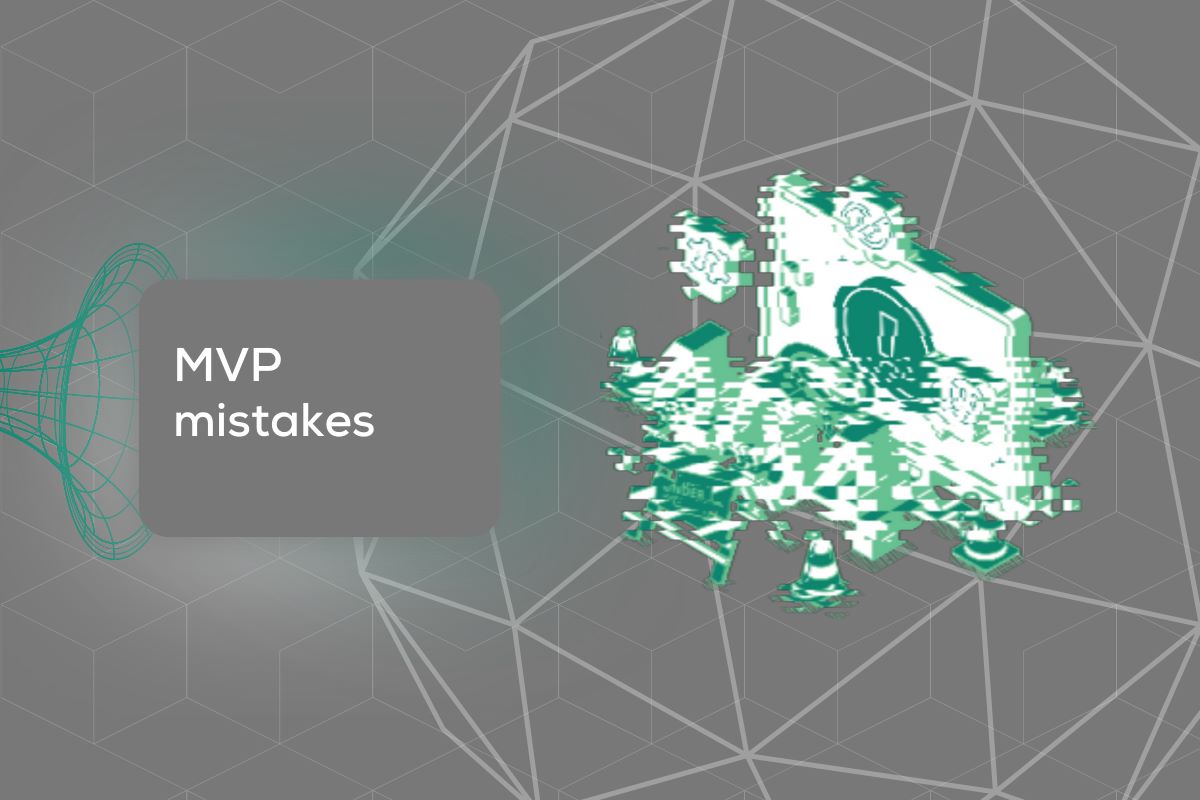Plunging into the MVP development journey can be challenging at first. Arm yourself with knowledge through thorough research since, in the world of startups, “MVP” doesn’t stand for “Most Valuable Player” but for “Most Viable Product,” and you need to avoid all common MVP mistakes to get your startup off the ground successfully. Follow our guide to dodge any mishaps coming your way while you attempt to build MVPs.
One of the Most Common Mistakes When Building an MVP Is Lack of Market Research
Perhaps you are ready to dive into the world of MVPs and invest in a mobile app development company, but you find yourself struggling to come up with a good strategy? The issue might lie in the fact that you’ve skipped a crucial step – the market research. Without research, it would be just like navigating a map blindfolded.
Without this step, it is not possible to find out whether the users need and are ready to pay for a service you’d like to develop. The aim is to create something customers will find useful and that they will support with their money. Via market research, you can also find out what main types of MVPs will work the best for the target users.
Gather Essential Feedback By Beginning Your Market Research for the Product in the Right Way
So, what is the smartest way to kick off market research? Just like when you learn what an MVP is, the first stage here is to get to know the target customers a bit better. Identify the demographics you are aiming for, the issues customers are dealing with, and what kind of solution they need.
Next, take a look at your competitors. Analyze their advantages and drawbacks. Test out the idea before launching an MVP by conducting interviews and surveys. Evade the problems that Quibi, a streaming platform, had when their idea of presenting people with short videos on phones failed due to a lack of research on whether users wanted such a platform.

Development of a Minimum Viable Product That Offers Ideal Features
You’ve heard the term “the more, the merrier.” Well, to avoid one of the detrimental mistakes during MVP development, erase this term from your mind and focus on the “minimum” part of the creation process. Overwhelming early adopters with too many features that are not user-friendly or focused will prove to be a counterproductive boomerang.
We cannot stress enough how important it is to concentrate only on key features and let the user decide whether essential features are enough to pay for a product. The steps you can take to make sure the core functionalities are front and center are:
- Prioritize features that are linked to the core value,
- Use the MoSCoW method – focus on features you Must have, Should have, Could have, and Won’t have,
- Abide by the Kiss Principle, aka “Keep it Simple, Stupid,” to build something eye-catching.
Don’t Make a Mistake of Deciding on Building an MVP for a Larger Number of Users
Now that you’ve determined what the essentials of the product would be, the trap that lurks behind this mistake is thinking that such a simple service would appeal to the masses. It has been proven numerous times that products in their infancy cannot garner the interest of millions of people; instead, focusing on early adopters only is the primary objective. These individuals are bent on exploring new inventions, and they are more willing to adopt them and advocate for their benefits to other individuals.

Not Taking Into Consideration Quantitative and Qualitative Feedback is a Thing to Avoid
Quantitative and qualitative feedback will inform you whether the product is up for failure. Using one over the other is one of the mistakes when developing an MVP that is detrimental to the business. The information from both is crucial for understanding the process the startup could work in the long run.
Qualitative feedback deals with the quality of your service and user-friendliness, while quantitative deals more with metrics and shows how easy it is to use a particular design during the MVP app development process.
| Type of feedback | Objectives | When they should be used | Results |
|---|---|---|---|
| Qualitative | They determine the usability over a period of time and current usability. | When the product is done or during the phase of redesigning. | Important for determining what decisions the business should make. |
| Quantitative | They determine and resolve any problems with usability. | When the product is finished and during the beginning or ending phases of the designing stage. | They are important statistically. |
Choosing an Inept Development Team is a Colossal Mistake
The MVP software development process will surely fall through if you select an inept team. It would be like building a rocket with paper wings. One common blunder is an option for the cheapest option instead of hiring a full-service dream team.
Cutting corners would lead to risks down the line, and this kind of mishap can snowball, bringing you insufficient and incorrect feedback from early adopters. Choose teams that will provide you with insight and that know how to generate user feedback and improve upon the product as the feedback is rolling in, and that will inform you what comes after MVP.

With Juratech, You Won’t Have to Worry About MVP Mistakes
The team you can always lean on for the development of useful MVPs, as well as backend web development, mobile app development services, and frontend web development services, is Juratech. We are determined to provide solutions to a market that will need new perspectives and insights. With an expert team, all common mishaps will be avoided, and a smart strategy will be put into practice. Contact us to learn all that we do and how we can help and make your startup flourish into a promising business.







